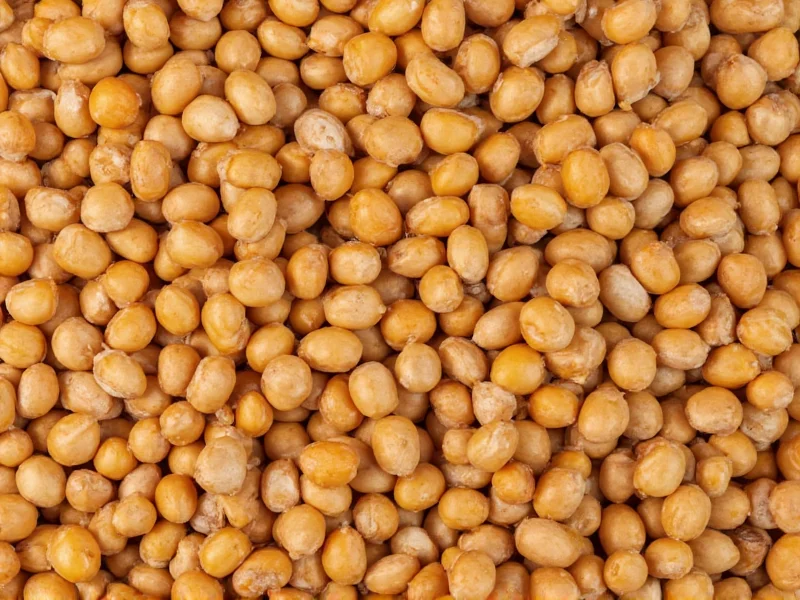When exploring plant-based nutrition or culinary ingredients, understanding botanical classifications matters. Lentils represent one of the most nutritionally dense members of the legume family, offering exceptional protein content and dietary fiber. This classification isn't merely academic—it directly impacts how we use lentils in cooking, their nutritional profile, and their agricultural benefits.
What Defines a Legume Botanically
Legumes belong to the Fabaceae family, one of the largest plant families with over 19,000 species. The defining characteristic of legumes is their fruit development: they grow in pods that split along two seams when mature. This "podded" structure distinguishes legumes from other plant categories.
Scientifically, legumes participate in nitrogen fixation—a process where symbiotic bacteria in root nodules convert atmospheric nitrogen into forms plants can use. This ecological benefit makes legumes valuable in crop rotation systems, improving soil fertility without synthetic fertilizers.
Lentils Within the Legume Spectrum
Lentils (Lens culinaris) represent a specific genus within the legume family. Unlike some legumes that grow on vines (like peas) or large bushes (like certain beans), lentils develop on small, annual plants with lens-shaped seeds—hence their name. Their flat, disc-like shape differentiates them visually from round beans or peas.
When comparing are lentils considered legumes versus pulses, it's important to note that all lentils are both legumes (botanical classification) and pulses (dried edible seeds of legume plants). This dual classification explains why lentils appear in both botanical discussions and nutritional guidelines.
| Legume Type | Botanical Features | Common Culinary Uses | Protein Content (per 100g dry) |
|---|---|---|---|
| Lentils | Small lens-shaped seeds, grow in pods with 1-2 seeds | Soups, stews, salads, dals | 24-26g |
| Chickpeas | Rounded, irregularly shaped seeds | Hummus, curries, roasting | 19-20g |
| Black Beans | Oval-shaped, black exterior | Latin American dishes, soups | 21-22g |
| Peas | Rounded seeds in longer pods | Side dishes, stews, purees | 22-24g |
Nutritional Advantages of Lentils as Legumes
The lentil botanical classification as legumes directly influences their exceptional nutritional profile. Like other legumes, lentils provide complete plant-based protein when combined with grains. They're particularly rich in folate, iron, and soluble fiber—nutrients that support heart health and stable blood sugar levels.
Research shows that regular consumption of legumes like lentils correlates with reduced risk of cardiovascular disease and type 2 diabetes. The high fiber content (about 15g per cooked cup) promotes satiety, making lentils valuable for weight management. Unlike some legumes, lentils require no presoaking and cook relatively quickly, increasing their accessibility.
Common Misconceptions About Lentils and Legumes
Many people wonder about the difference between lentils and legumes, mistakenly thinking they're separate categories. In reality, lentils are a specific type of legume, just as apples are a specific type of fruit. The confusion often stems from culinary terminology where "legumes" sometimes refers only to beans in casual conversation.
Another frequent question concerns whether all legumes are pulses. While all lentils qualify as pulses (dried seeds of legume plants), not all legumes are pulses—fresh green beans and snow peas are legumes but not pulses since they're consumed in their immature state.
Practical Implications of Lentils' Legume Classification
Understanding that lentils belong to the legume family has several practical applications:
- Culinary pairings: Combining lentils with grains like rice creates complete protein profiles
- Gardening benefits: Growing lentils improves soil nitrogen content for subsequent crops
- Dietary planning: Recognizing lentils' high fiber content helps manage portion sizes to avoid digestive discomfort
- Allergy considerations: Those with legume allergies should exercise caution with lentils, though reactions vary by individual
Conclusion
Lentils' classification as legumes isn't merely botanical trivia—it directly impacts their nutritional value, culinary applications, and agricultural benefits. As one of the oldest cultivated crops, lentils continue to offer sustainable nutrition that aligns with modern dietary recommendations. Whether you're exploring plant-based eating, improving soil health, or simply expanding your culinary repertoire, recognizing lentils as legumes provides valuable context for their versatile applications.
Frequently Asked Questions
Are lentils and legumes the same thing?
Lentils are a specific type of legume. All lentils are legumes, but not all legumes are lentils. Legumes represent the broader botanical family (Fabaceae) that includes beans, peas, chickpeas, and lentils. The term "legume" refers to plants that grow in pods, while lentils are a particular genus (Lens) within this family with distinctive lens-shaped seeds.
What makes lentils different from other legumes?
Lentils differ from other legumes primarily in their shape, size, and cooking properties. They're smaller and flatter than most beans, with a lens-like shape. Unlike many legumes, lentils don't require presoaking and cook relatively quickly (15-30 minutes). Nutritionally, lentils contain slightly higher protein content than some other legumes and have a unique fiber composition that makes them particularly digestible for many people.
Are red lentils still considered legumes?
Yes, all varieties of lentils—including red, green, brown, and black—are legumes. The color differences come from the seed coat and don't change their botanical classification. Red lentils (which are actually orange when hulled) belong to the same Lens culinaris species as other lentil varieties. Their quicker cooking time and tendency to break down make them popular for soups and dals, but they remain fundamentally legumes.
Can people with legume allergies eat lentils?
People with legume allergies should exercise caution with lentils, as allergic reactions can vary. While peanut allergies (peanuts are legumes) don't necessarily mean someone will react to lentils, cross-reactivity is possible. Lentils contain different proteins than peanuts or soybeans, but those with multiple legume allergies may need to avoid them. Always consult an allergist for personalized advice if you have legume sensitivities.
Why are lentils classified as both legumes and pulses?
Lentils have dual classification because "legume" refers to the entire plant family (botanical category), while "pulse" describes the dried seed of legume plants. All lentils are legumes by botanical definition, and when dried, they also qualify as pulses. This distinction matters in agricultural and nutritional contexts—fresh green peas are legumes but not pulses, while dried lentils are both.











 浙公网安备
33010002000092号
浙公网安备
33010002000092号 浙B2-20120091-4
浙B2-20120091-4